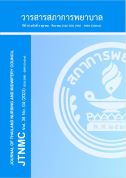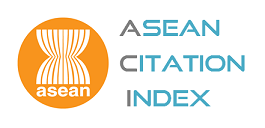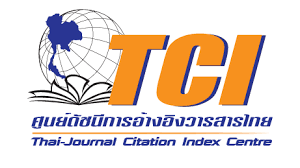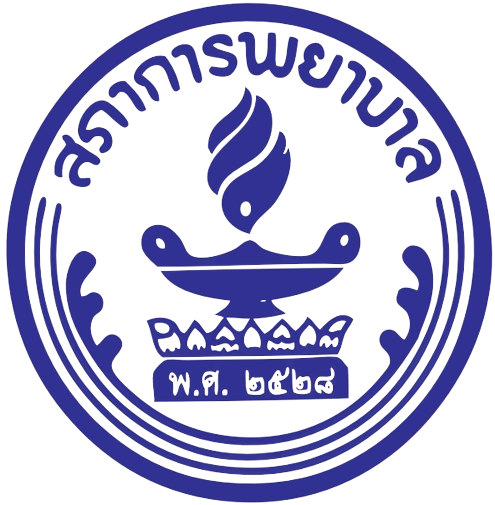ผลของโปรแกรมส่งเสริมการรับรู้ความเชื่อด้านสุขภาพผ่านการพยาบาลทางไกลต่อพฤติกรรมการป้องกันโรคหลอดเลือดสมองในผู้ป่วยโรคความดันโลหิตสูงที่ควบคุมความดันโลหิตไม่ได้
DOI:
https://doi.org/10.60099/jtnmc.v38i04.266286คำสำคัญ:
ความดันโลหิตสูง , ความเชื่อด้านสุขภาพ , การพยาบาลทางไกล , พฤติกรรมการป้องกัน , โรคหลอดเลือดสมองบทคัดย่อ
บทนำ โรคความดันโลหิตสูงเป็นสาเหตุที่สำคัญของโรคหลอดเลือดสมอง การส่งเสริมความเชื่อ ด้านสุขภาพผ่านการพยาบาลทางไกลเป็นวิธีการหนึ่งที่จะช่วยให้ผู้ป่วยโรคความดันโลหิตสูงที่ควบคุม ความดันโลหิตไม่ได้ มีพฤติกรรมการป้องกันการเกิดโรคหลอดเลือดสมองที่เหมาะสม
วัตถุประสงค์การวิจัย เพื่อศึกษาผลของโปรแกรมส่งเสริมการรับรู้ความเชื่อด้านสุขภาพผ่าน การพยาบาลทางไกลต่อพฤติกรรมการป้องกันโรคหลอดเลือดสมองในผู้ป่วยโรคความดันโลหิตสูงที่ควบคุม ความดันโลหิตไม่ได้
การออกแบบวิจัย การวิจัยเชิงทดลองแบบสองกลุ่ม วัดผลก่อนและหลังทดลอง ประยุกต์ใช้ แบบแผนความเชื่อด้านสุขภาพเป็นกรอบแนวคิดของการศึกษา
วิธีดำเนินการวิจัย กลุ่มตัวอย่างเป็นผู้ป่วยโรคความดันโลหิตสูง 30 คนที่ควบคุมความดันโลหิต ไม่ได้ในคลินิกโรคความดันโลหิตสูง โรงพยาบาลชุมชนแห่งหนึ่งของจังหวัดทางภาคตะวันออกเฉียงเหนือ สุ่มตัวอย่างแบบง่ายแล้วจัดเข้ากลุ่มโดยการสุ่ม แบ่งเป็นกลุ่มทดลองและกลุ่มควบคุมกลุ่มละ 15 คน กลุ่มทดลองได้รับโปรแกรมส่งเสริมการรับรู้ความเชื่อด้านสุขภาพผ่านการพยาบาลทางไกล และกลุ่มควบคุม ได้รับการพยาบาลตามปกติ เครื่องมือที่ใช้ในการเก็บรวบรวมข้อมูล ได้แก่ แบบสอบถามพฤติกรรม การป้องกันโรคหลอดเลือดสมอง มีค่าความเชื่อมั่นเท่ากับ .83 วิเคราะห์ข้อมูลด้วยสถิติพรรณนา การทดสอบทีอิสระ และการทดสอบทีคู่
ผลการวิจัย ภายหลังการทดลอง กลุ่มทดลองมีคะแนนเฉลี่ยพฤติกรรมการป้องกันโรคหลอดเลือดสมอง (M = 3.51, SD = 0.54) สูงกว่ากลุ่มควบคุม (M = 2.46, SD = 0.54) อย่างมีนัยสำคัญทางสถิติ (t = 7.937, p <. 001) และสูงกว่าก่อนการทดลอง อย่างมีนัยสำคัญทางสถิติ (M = 2.67, SD = 0.26, t = 5.005, p <. 001) เมื่อพิจารณารายด้าน พบว่า กลุ่มทดลองมีคะแนนเฉลี่ยด้านการรับประทานอาหาร (M = 3.17, SD = 0.86) ด้านการจัดการความเครียด (M = 3.52, SD = 1.08) ด้านการใช้สารเสพติดหรือสิ่งกระตุ้น ต่าง ๆ (M = 4.03, SD = 0.92) และด้านการรับประทานยาลดความดันโลหิต (M = 4.53, SD = 0.47) สูงกว่า กลุ่มควบคุมอย่างมีนัยสาคัญทางสถิติ ( ํ p < .05) อย่างไรก็ตามด้านการออกกำลังกายระหว่างกลุ่มควบคุม (M = 1.37, SD = 1.01) และกลุ่มทดลอง (M = 1.90, SD = 1.25) ไม่แตกต่างกัน (Z = -1.383, p >.05)
ข้อเสนอแนะ ทีมสุขภาพควรนำโปรแกรมส่งเสริมการรับรู้ความเชื่อด้านสุขภาพผ่านการพยาบาล ทางไกลไปประยุกต์ใช้ในคลินิกความดันโลหิตสูงเพื่อการส่งเสริมการรับรู้ความเชื่อด้านสุขภาพของผู้ป่วย โรคความดันโลหิตสูงและติดตามพฤติกรรมการป้องกันโรคหลอดเลือดสมองอย่างต่อเนื่อง
Downloads
References
World Health Organization [WHO]. Hypertension. [internet]. 2023 [cited 2022 March 24]. Available from: https://www.who.int/news-room/factsheets/detail/hypertension
Campbell NRC, Burnens MP, Whelton PK, Angell SY, Jaffe MG, Cohn J, et al. World Health Organization guideline on pharmacological treatment of hypertension: Policy implications for the region of the Americas. Health Policy 2021;9:1-10. Available from: https://www.thelancet.com/journals/lanam/article/PIIS2667-193X(22)00036-9/fulltext
Thiamkao S. Incidence of stroke in Thailand. Journal of neurology science of Thailand, 2023;39(2):39-46. (in Thai)
Health Insurance, Strategy and medical Information group, Wapi Pathum Hospital. Report of the meeting of the team that oversees and develops the patient care process in Wapi Pathum Hospital (2023). (in Thai)
Yodpera K. Factors related to self–protection behaviors from stroke of uncontrolled hypertension patients in Nong Saeng district, Saraburi province. Journal of Council of Community Public Health 2019; 1(2):17-27. (in Thai)
Nilnet N. Factors associated with the incidence of stroke among hypertensive patients in Bueng Kan province. Thai Journal of Health Education 2019; 4(1):62-75. (in Thai)
Chanaphan Y, Settheetham D. Factors associated with stroke prevention behavior among hypertension patients in Kumpawapi district, Udon Thani province. Journal of Sakon Nakhon Hospital 2018; 21(2):109-19. (in Thai)
Jiopraditkul S. Self–care behaviors and blood pressure controlling ability of essential hypertension patients, muang Potawas primary care unit. Journal of Health Research and Innovation 2020;3(1):15-29. (in Thai)
Rosenstock IM. Historical origins of the health belief model. Health education monographs winter 1974; 2(4): 328-33. Available from: https://www.jstor.org/stable/45240621
Pholpim P. Effect of health educational program for stroke on knowledge and perceived of hypertension patients in Chiang Kwan hospital. Journal of Health Research and Innovation 2021;2(3):167-75. (in Thai)
Sitthiyodying C. Health belief patterns that are related to self-care behavior. To prevent stroke in patients who cannot control their blood pressure, Napalai hospital Samut Songkhram province. Thai Journal of Health Education 2022; 2(2):46-60. (in Thai)
Charoensappakit N. The relationship between health belief patterns, awareness of warning symptoms, and stroke prevention behavior in patients with high blood pressure. Journal of Primary Care and Family Medicine 2020; 3(3):46-58. (in Thai)
Ngerndee K, Manoton A, Srisukkham T, Takaew T. Effectiveness of the health belief model application program towards behavior to prevent stroke of patients with high blood pressure, Mueang district, Phayao province. Thai Journal of Health Education 2021;44(2):171-186. (in Thai)
Wichaiyo W, Jongsamak P, Chaithong S, Khotbudda S. Factors predicting stroke preventive behaviors of hypertensive patients at Na Fai Sub-district health promoting hospital in chang wat Chaiyaphum. Thai Journal of Nursing 2021; 70(2): 27-36. (in Thai)
Kongwiwat K, Lamsawadikul W, Nuisorn M. Results of the development program Behaviors to prevent stroke of patients at risk Kanchanaburi province. Journal of Nursing and Health Care 2017; 35(3): 129-137. (in Thai)
Bunsat P, Piyabunditkul L. Results of prevention programs. Stroke in the high-risk group, Huai Bong subdistrict, Mueang district, Chaiyaphum province. Journal of Sakon Nakhon Hospital 2018; 21(2): 28-41. (in Thai)
Singko T, Carpenter S, Torsakulkaew T. Effects of a health belief promotion program on stroke prevention behavior and perceived benefits of maintaining behavior. In the elderly at risk group. Journal of Charoenkrung Pracharak Hospital 2020; 16(2): 42-60. (in Thai)
Munfu S. Results of the stroke prevention program for patients with high blood pressure. By applying the theory of health beliefs in Mueang Pan district Lampang province. Singburi Hospital Journal 2022; 31(1):68-78. (in Thai)
Elbialy AA, Bahgat ZF, El-ahwal L, El- Gamal SMA. Effect of Implementing Tele-nursing versus traditional nursing program on knowledge, life style modification and blood pressure control for hypertensive patients. IEJNSR 2022;3(1):484- 515. Available from: https://ejnsr.journals.ekb.eg/article_247231.html
Li Z, Yan LL, Enying G, Gu W, Turner EL, John A. Gallis, et al. Effectiveness of a primary care-based integrated mobile health intervention for stroke management in rural China (SINEMA): a clusterrandomized controlled trial. Stroke & vascular neurology 2021; 159-76. Available from: https://pubmed.ncbi.nlm.nih.gov/33909607/
Talebi F, Jesmi A, Rakhshani M, Tajabadi A. Effects of telenursing on the management of self-care behaviors in patients with chronic hypertension. J Health Res 2023;13(4):273-80. Available from: https://jrh.gmu.ac.ir/article-1-2174-en.html
Pitthayapong S, Numpoon J, Wattradul D, Kolyani S, Srisart A. Effects of a family caregivers’ capacity building program by telenursing on practices of post-stroke care and activities of daily life of the stroke patients. Thai Red Cross Nursing Journal 2023; 16(1):116-34. Available from: https://he02.tci-thaijo.org/index.php/trcnj/article/view/259999/180237 (in Thai)
Moonfoo S. Effects of a stroke prevention program for people with hypertension by applying health belief theory in Mueang Pan district, Lampang province. Singburi Hospital Journal 2022;31(1):68-78. Available from: https://he01.tci-thaijo.org/index.php/shj/article/view/257857/174453 (in Thai)
Announcement from the Nursing and Midwifery Council guidelines for tele-nursing (Tele-nursing) 2021. Royal Gazette volume 138, special section 33 d. (10 february 2564). (in Thai)
Polit DF, Beck CT. Nursing Research: Generating and Assessing Evidence for Nursing Practice. (10th ed.). Philadelphia: Lippincott Williams & Wilkins 2019; 8(7):786. Available from: https://www.hindawi.com/journals/nrp/
Downloads
เผยแพร่แล้ว
How to Cite
ฉบับ
บท
License
Copyright (c) 2023 วารสารสภาการพยาบาล

This work is licensed under a Creative Commons Attribution-NonCommercial-NoDerivatives 4.0 International License.







